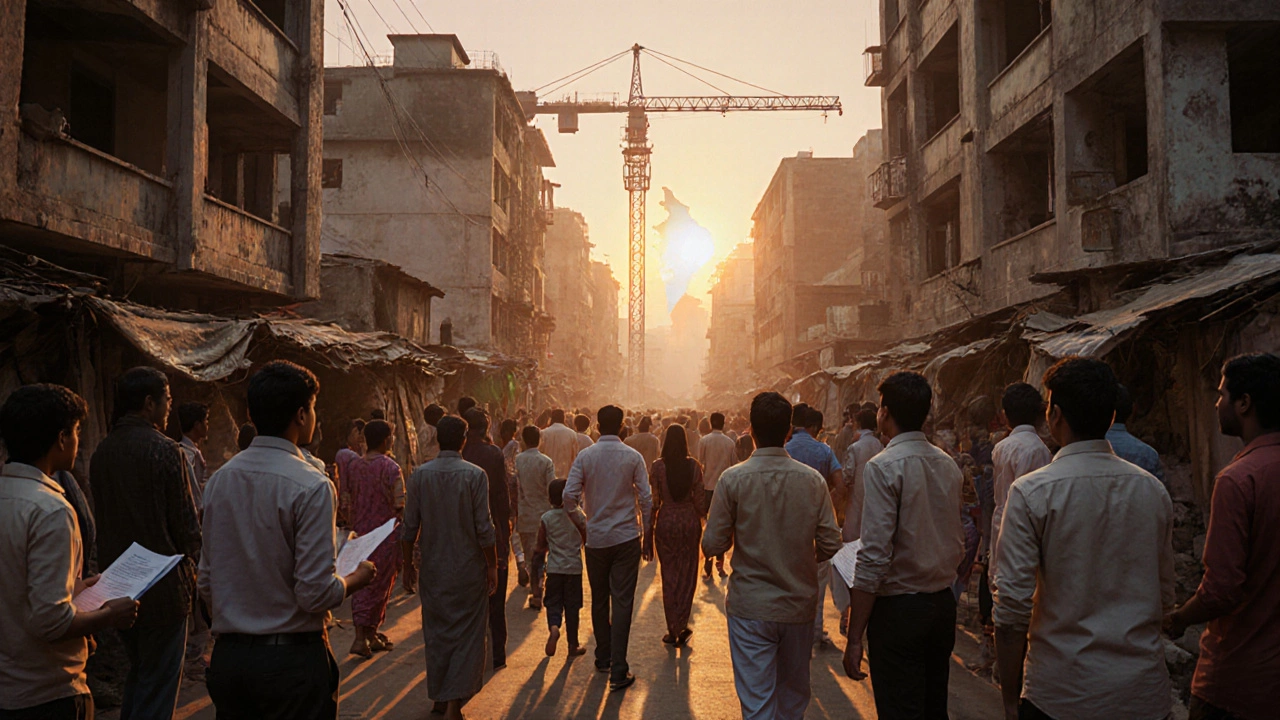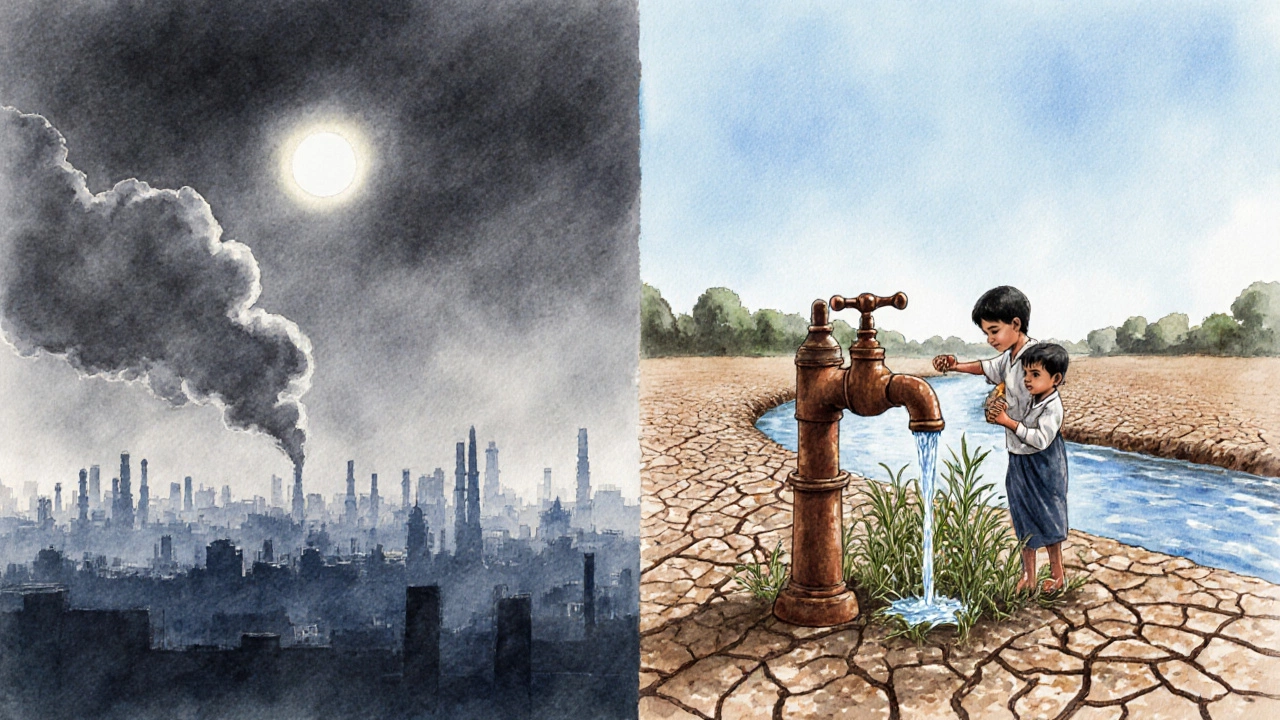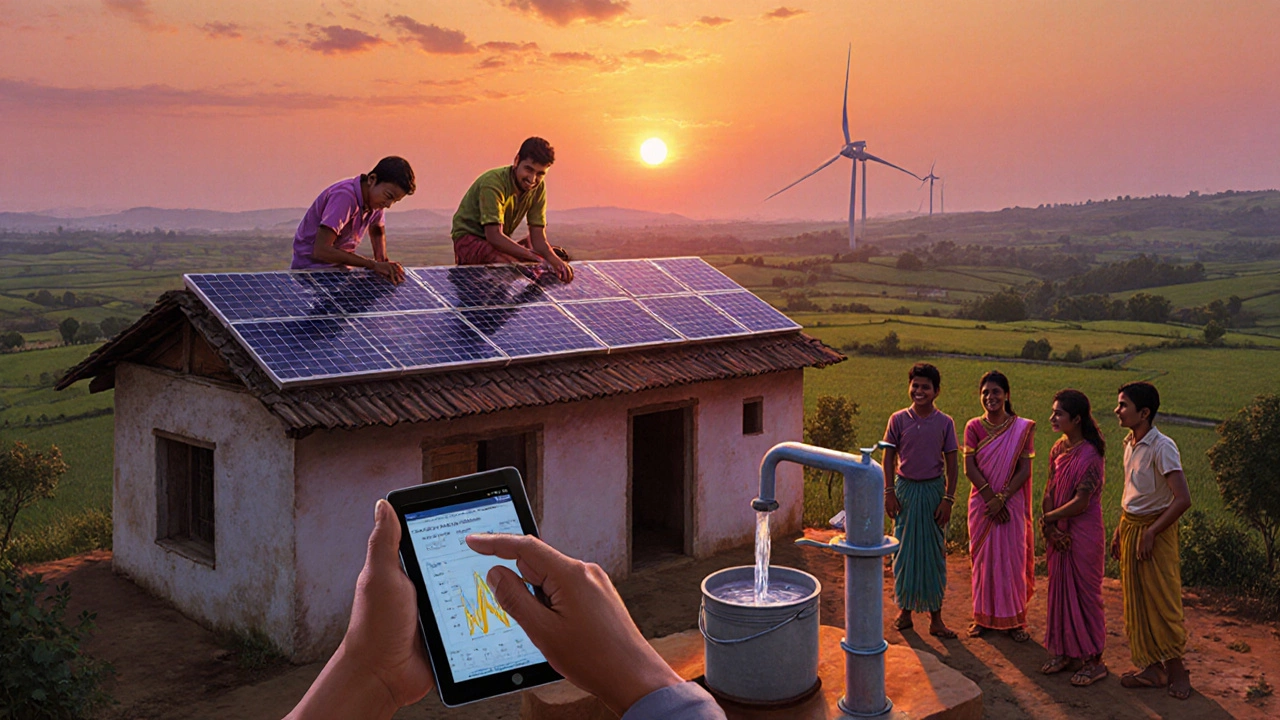India's Biggest Problems in 2025 - A Deep Dive into Challenges
 Oct, 18 2025
Oct, 18 2025
Youth Unemployment Impact Calculator
Understanding India's Youth Unemployment Crisis
The article highlights that India's youth unemployment rate (15-29) sits at 12%, double the national average. This calculator helps visualize the scale of the challenge based on key demographic and economic factors.
Input Your Assumptions
India is a South Asian nation home to over 1.4 billion people, grappling with a mix of demographic, economic, and environmental pressures. This article unpacks the most pressing issues you’ll read about in news feeds and policy debates, and gives you a clear picture of why they matter right now.
Key Takeaways
- Population growth fuels demand for jobs, housing, and basic services.
- Unemployment, especially among youth, is climbing despite overall GDP growth.
- Air pollution and water scarcity are worsening health outcomes across urban and rural areas.
- Healthcare, education, and infrastructure lag behind the needs of a fast‑changing economy.
- Agricultural distress pushes many to cities, intensifying urban challenges.
Demographic Pressure
The Population growth has kept India’s labor pool expanding but also stretched public services. With a median age of 28, the country enjoys a demographic dividend-if it can create enough jobs. The reality is a growing mismatch between the number of graduates and the quality of available positions.
Rising Unemployment
According to the latest government surveys, the Unemployment rate for youth (15‑29) sits around 12 %, double the national average. The informal sector still absorbs many workers, but wages are low and job security is minimal. Automation in manufacturing and the shift toward services have left a skills gap that training programs have struggled to fill.
Environmental Crises
Air pollution now ranks among the world’s worst, especially in megacities like Delhi and Kolkata. Fine particulate matter (PM2.5) regularly exceeds WHO safe limits by 4‑5 times, leading to respiratory illnesses and premature deaths. Simultaneously, Water scarcity affects millions, with groundwater levels dropping 30 % in the past decade. Irrigation demands, industrial use, and climate‑driven droughts combine to tighten the water budget.
Healthcare System Strain
The Healthcare system serves a vast, unevenly distributed population faces chronic under‑funding. Rural clinics often lack basic equipment, while urban hospitals battle overcrowding. The COVID‑19 pandemic highlighted gaps in disease surveillance and vaccination outreach, especially among migrant workers.

Education Quality Gaps
While enrollment rates are high, the Education system struggles with learning outcomes and teacher shortages. International assessments place India well below the OECD average in math and science. Private tutoring is booming, creating a two‑tier system where only affluent families can afford quality prep.
Infrastructure Bottlenecks
Transport and energy infrastructure lag behind demand. The Infrastructure deficit shows up as chronic traffic congestion, unreliable power supply, and inadequate public transit in many cities. Projects like the Delhi‑Mumbai Industrial Corridor aim to close gaps, but land acquisition and financing delays slow progress.
Agricultural Distress
The Agricultural sector supports roughly 50 % of India’s workforce yet yields low incomes. Erratic monsoons, rising input costs, and limited access to modern technology push many farmers into debt. Crop failures trigger seasonal migration to urban centers, adding pressure to already strained city services.
Urbanization and Its Discontents
Rapid Urbanization has seen city populations swell by 2‑3 % annually. While cities offer economic opportunities, they also generate slums, sanitation challenges, and traffic snarls. The mismatch between housing supply and demand leaves millions in informal settlements lacking clean water and sewage.

Social Inequality
Gender inequality remains a stubborn obstacle. Women’s labor force participation hovers around 20 %, well below global averages. Caste‑based discrimination still influences access to education and jobs, especially in rural regions. These social fissures impede inclusive growth.
Government Initiatives and Citizen Action
Policies like the National Education Policy 2020, the Pradhan Mantri Awas Yojana (housing), and the Swachh Bharat Mission (sanitation) aim to address some pain points. Yet implementation gaps persist. Grassroots NGOs and tech‑savvy youth are stepping in with digital tools-solar micro‑grids, tele‑medicine platforms, and open‑source education resources-showing that community‑driven solutions can complement top‑down reforms.
What to Watch in the Next Years
- How effectively the government can translate policy promises into on‑ground projects.
- The pace of renewable energy adoption and its impact on power reliability.
- Whether private sector upskilling programs can lower youth unemployment below 8 %.
- Progress on air‑quality monitoring and enforcement of emission standards.
- Continued migration trends and how urban planners respond to housing shortages.
Quick Checklist for Readers
- Track unemployment rates on the Ministry of Labour’s monthly dashboard.
- Use the Air Quality Index (AQI) app to monitor real‑time pollution levels.
- Follow state‑level health bulletins for updates on vaccine drives.
- Review NG‑O reports on school performance to gauge education reforms.
- Support local NGOs working on water conservation projects.
Why is unemployment high despite economic growth?
Growth has been concentrated in sectors that rely heavily on automation or low‑skill labor. Meanwhile, education outcomes haven’t kept pace, leaving many graduates without the skills needed for new jobs.
What are the main health impacts of air pollution in India?
Long‑term exposure raises the risk of asthma, chronic obstructive pulmonary disease, heart disease, and premature death, particularly among children and the elderly.
How does water scarcity affect agriculture?
Reduced groundwater and erratic rains limit irrigation, leading to lower yields, crop losses, and increased farmer indebtedness.
What steps can citizens take to improve urban sanitation?
Participate in community clean‑up drives, support NGOs advocating for better waste management, and pressure local bodies to upgrade sewage infrastructure.
Is the government’s focus on renewable energy enough?
Renewable capacity has risen, but grid integration, storage, and financing hurdles still limit widespread adoption. Stronger policy incentives are needed.